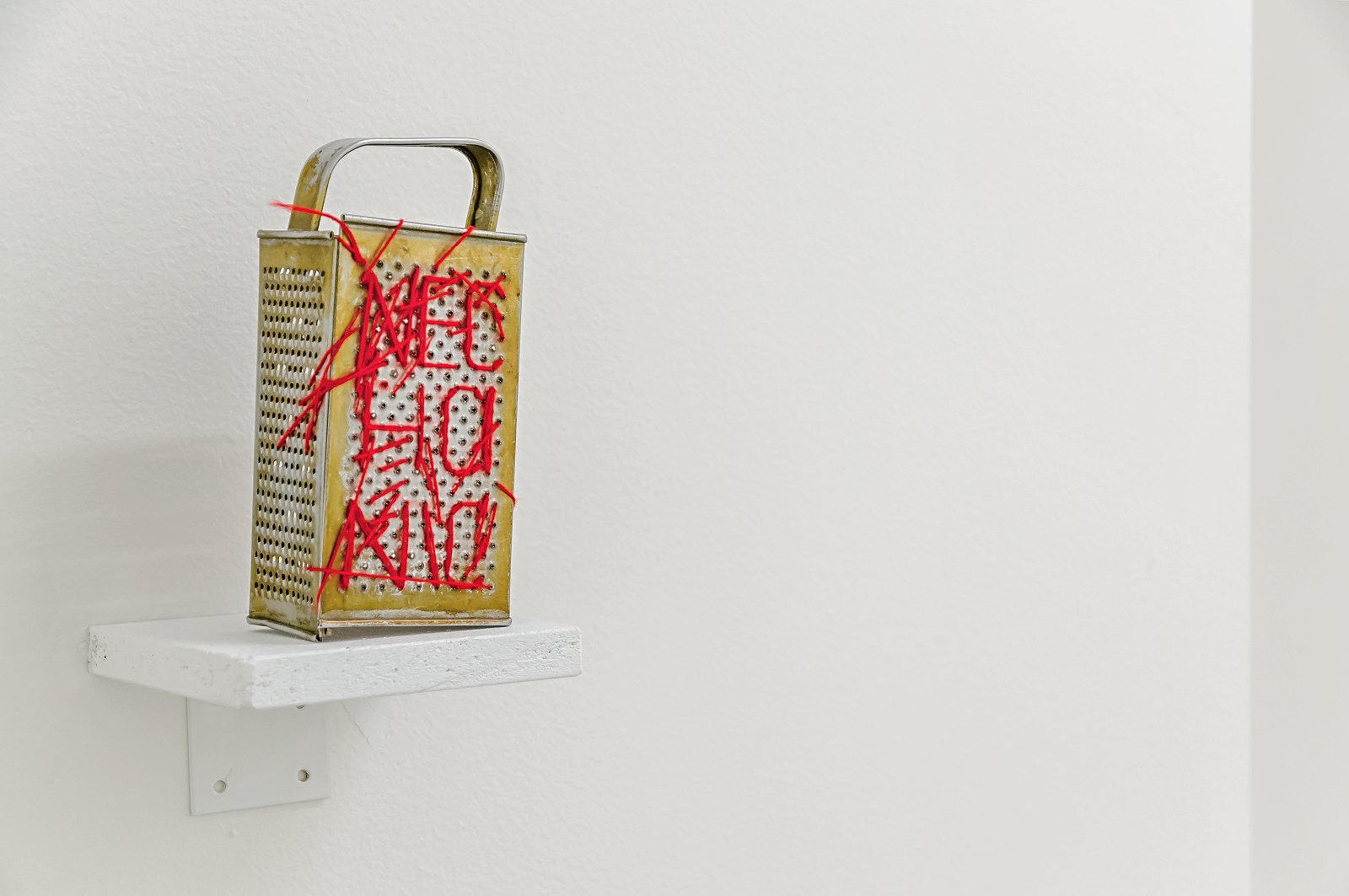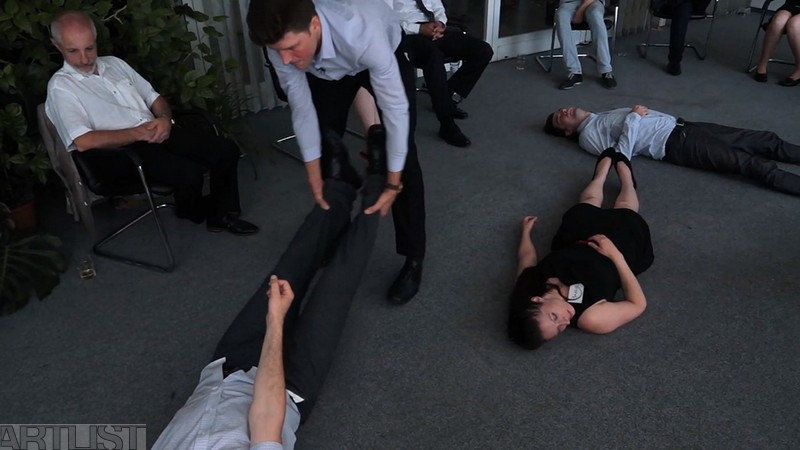The garden has since the era of the Enlightenment in the eighteenth century demarcated a space outside of politics, a separate realm of private, individual and intellectual concern insulated from the mechanisms of power. The most famous articulation of gardening as an apolitical activity appears as the last words in French philosopher Voltaire’s novel Candide, in which the hero, after becoming disillusioned with the state of the world following travels across Europe and South America, where he was confronted with the inhumanity of slavery, resignedly exclaims: “we must cultivate our garden.” The formalism of the French Enlightenment garden could also be seen as an expression of the divide between nature and culture that remains an epistemol

ogical symptom of the Anthropocene. Today the rhetorical conceit and horticultural praxis of the garden as an apolitical oasis isolated from the chaos of the outside world, including the unruliness of untamed nature lying just beyond its gates, collides with the unstable social and agrarian realities of the era of planetary crisis. As horticultural art practices demonstrate, it is only by activating its supressed politics that the garden can be recultivated as a terrain of transnational refuge, a place of interspecies nurturing and a site of ecological restoration, or at least of temporary respite from the spiral of soil degradation, species extinction and climate breakdown.
Gardening has always been political, not least in the struggle between those who claim to own or control the garden and those who cultivate it. In his work Grey, Green, Gold (2015-6), Uriel Orlow considered the case of the vegetable plot started by Nelson Mandela and his fellow political prisoners during their imprisonment on Robben Island off the coast of South Africa during the 1970s. Beginning with a few tomato seeds given to them by the guards, Mandela and the other ANC prisoners established their garden on a tiny patch of land in the grey exercise yard, enriching the soil with ostrich droppings collected on their way to the stone quarry where they were sent for hard labour. The garden became a site of political contestation, with the authorities using a photograph of Mandela dressed in prison clothing and leaning on a spade to project the illusion of a “seemingly leisurely, therapeutic, and apolitical activity.”[1] The politics of the garden from the prisoners point of view consisted not just in the physical and mental resilience derived from tending and eating the vegetables, but also in the political agency in reclaiming a patch of land from the regime. The garden also played a direct part in the anti-Apartheid struggle as a hiding place for the completed pages of Mandela’s autobiography the Long Road to Freedom, which were concealed in tins buried in the soil. The plants, by demonstrating their ability to thrive with careful tending even within the concrete confines of the prison, were a symbol of resistance and harbinger of political change.
Choosing the site for a garden can be also be an act of political self-determination. Nikita Kadan’s Limits of Responsibility (2014) dealt with the recent history of the Maidan protests in Kyiv, taking as its focus the vegetable garden established by the activists during their occupation of Independence Square. Alongside the usual paraphernalia of urban protest such as makeshift barriers, rudimentary shelters and firepits, a slide projection documented a vegetable plot for growing onions, lettuce and cabbage. To start a garden on the barricades was a political or even revolutionary gesture that demonstrated the resolve of the protesters to persevere, despite the extreme cold and the threat of state violence. The installation also included a model of a raised bed garden, which was built according to instructions in a 1979 Soviet manual for agricultural displays. While the original version was designed to promote Soviet agricultural achievements, Kadan decided to leave the display boards as blank canvases, pointing to the rupture with the horticultural histories of socialism. The empty boards also held out the possibility of opening the horticultural imagination to alternative forms of solidarity and social purpose, as well as heralding the resurgence of political gardening in the liberated spaces of the urban fabric.

The politics of gardening during wartime were addressed in Medical and Political Fantasy (2021-2) by Kateryna Aliinyk, who explored the effects of war on subterranean soil worlds. Her series of paintings depict dystopian assemblages of plant life and the toxic remnants of munitions protruding into the soil. These troubling soilscapes reveal grenade-like objects that are also reminiscent of human hearts, which grow underground with blood vessels interchangeable with roots, to create phantasmagorical images in which arteries and artillery merge into one. The paintings visualize the capacity of the soil to absorb the pollution brought by war, while also suggesting that the land and its human and non-human inhabitants will be permanently transformed by the conflict. The artist’s concerns were grounded in her experience of intensively tending vegetables with her family on a plot of land in Luhansk in the aftermath of the Russian invasion of the region in 2014. [2] Their decision to cultivate their allotment in the face of the threat of bombardment appears as a courageous act of defiance and form of resistance to the occupation, as well as a therapeutic necessity through the healing and restorative power of gardening.
The environmental impact of militarism, in this case the bombardment of London during the Second World War, and the capacity of urban gardens to overcome its lingering toxic legacies, come together in Phytology, a project led by Michael Smythe since 2014. The artist and his collaborators adopted an overgrown bombsite in Bethnal Green in the East End, where the ruins of the church of St. Jude, the patron saint of lost causes, had after decades of neglect been cleared of debris and fenced off by the council. Renamed as the Bethnal Green Nature Reserve, this wild space framed by an inner city housing estate was reinvented as a natural apothecary of medicinal plants that have been regularly vilified as weeds. Challenging the chemical ethos of the agricultural systems of the Anthropocene, the project sets out to recover traditional plant knowledges. Phytology offers a model for a different kind of cultivation, in which local people from diverse communities lightly tend the garden, working with rather than acting on the autonomous processes of the soil biome. The growing of human-plant cooperation is combined with a programme of activities to develop understanding through art practice of the root causes of the climate crisis, including through the organizing of talks, performances and collective rituals in a forest amphitheatre. There is however no escape, even in this idyllic oasis of ferality, from the threat posed to the viability of biological life on Earth by climate change, as warmer winters disrupt the cycle of die back that are essential to the regenerative processes of decomposition.
In the urban garden social activism can also coalesce around the entwined politics of food and migration. The exchange of plant knowledges was at the centre of Dana Olărescu’s collaborative project Food Resilience (2022), which relied on the empowering and inclusive space of the inner city Calthorpe Community Garden in London, to explore food, plant and cultivation with people from East European migrant communities. A series of weekly workshops led by invited artists enabled participants to talk through their shared fears around famine, violence and invasion and work towards the growing of cooperative structures of mutual aid and voicing of demands for migrant land rights. The collective cooking of a democratic soup, the making of soil regeneration pledges and the debating of colonialism through the prism of Georgian tea showed food to be, in the artist’s words, a “powerful, uniting means of social resistance against the powers that be.”[3] This community garden was activated as a site for the political task of generating solidarities between East European migrants who, in the wake of the hostile ideology of Brexit, are marginalized by the institutions of national culture and live in uncertainty with the threat of future displacements and upheaval. The work of anthropologist Kristina Lyons on human-soil interactions in Colombia, and in particular the relation between different modes of gardening and socializing, may offer insights here for emergence of interspecies solidarities in urban gardens. In Vital Decompositions she considers how the reawakening of microbial worlds “as communities of plants return,” the attraction of different birds and insects “to creeping plant gardens,” and the preservation and sharing of “recipes and remedies” all have a hand in forming a “community of future human and nonhuman cultivators.”[4]
The gravity of the peril posed by climate change to the vitality of soil worlds, encapsulated in the warning by the United Nations that there may be only sixty harvests left on Earth, has brought a new urgency to reconsidering the horticultural practices of the Anthropocene. The inescapability of the effects of climate breakdown have brought an extra dimension to the ultimate impossibility of retreat to the garden as a shelter from political or military upheaval, as wishfully proposed in Voltaire’s Candide. Against the backdrop of the displacement, hardship and social fragmentation brought by military conflicts and economic crises, urban gardens are nevertheless being rediscovered as zones of ecological and social restoration in the heart of dystopian twenty-first century cityscapes. Dispelling the illusion of an apolitical horticulture, artists are reinstating political gardening as the cultivation of resilience, resistance and recovery in all its human and non-human diversity. With the decline of the globalized model of industrial agriculture that became dominant in the Anthropocene, the pathway to climate adaptation lies in the restitution of cooperative and non-exploitative approaches to tending the land across the blurred terrains of the urban and the rural. To reinstate horticulture as an empowering political act which tacitly embraces a collaborative and non-intrusive relationship with the soil and its diverse constituents: we must cultivate our garden differently.
[1] Uriel Orlow and Shela Sheikh, “A Prisoner in the Garden,” in Theatrum Botanicum (Berlin: Sternberg Press, 2018), 27.
[2] See statement by Kateryna Aliinyk on the art platform Ukraine Ablaze, accessed 15 May 2023 at: https://ukraineablaze.art/en/artists/kateryna-aliinyk
[3] The project was co-organized with Noemi Gunea for Polish Migrants Organise for Change, see also the artist’s website at: https://www.danaolarescu.com/food-resilience
[4] Kristina M. Lyons, Vital Decomposition: Soil Practitioners + Life Politics (Durham: Duke University Press, 2020), 131-2.





